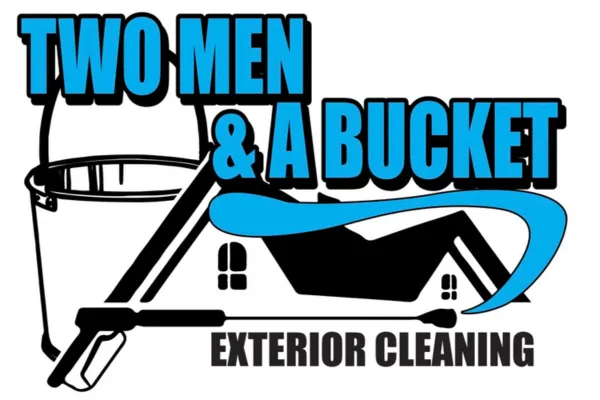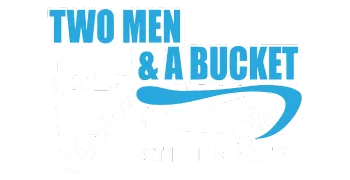Have Questions?
Checkout our blog you'll probably find the answer...

How Long Does Soft Washing Last?

Two Men and A Bucket's Website
PHONE: 314-761-9049
EMAIL: twomenexteriors@gmail.com
More On Soft Washing Here!
Learn more about pressure vs soft washing here!
How Long Does Soft Washing Last?
Introduction
Imagine walking up to your home and being greeted by a sparkling clean exterior. It’s a sight every homeowner loves, but it often prompts the question: "How long will it last?" Soft washing, a popular method for cleaning various exterior surfaces, promises not only a thorough clean but also longer-lasting results. In this blog post, we’ll delve into the details of soft washing, its benefits, and most importantly, how long you can expect the results to last.
What is Soft Washing?
Soft washing is an exterior cleaning technique that uses low-pressure water combined with specialized cleaning solutions. Unlike pressure washing, which relies on high pressure to remove dirt and grime, soft washing gently cleans surfaces by allowing the cleaning solutions to do the heavy lifting. This method is particularly effective for delicate surfaces that might be damaged by high pressure.
The Soft Washing Process
Low-Pressure Application: Soft washing involves using a pressure washer set to very low psi levels, often employing wider heads on the cleaning wand for greater impact reduction.
Cleaning Solutions: The process uses a mix of water, surfactants (which help the solution penetrate surfaces and break down grime), and often bleach to disinfect surfaces.
Application and Rinse: The cleaning solution is applied to the surface, allowed to dwell for a period, and then rinsed off, leaving the surface clean and sanitized.
Common Uses
Soft washing is ideal for a variety of surfaces:
Roofs: Effective for removing algae, mold, and moss without damaging shingles.
Siding: Suitable for wood, vinyl, stucco, and other types of siding.
Gutters: Cleans and clears out built-up grime and debris.
Decks and Patios: Gentle enough for wood and composite decking.
Windows: Cleans glass without the risk of cracking or breaking.
Benefits of Soft Washing
Soft washing offers numerous advantages over traditional pressure washing:
Gentle Cleaning: The low pressure minimizes the risk of damage to surfaces, making it suitable for fragile materials.
Thorough Cleaning: The cleaning solutions penetrate deeply, effectively removing dirt, mold, algae, and other contaminants.
Long-Lasting Results: The solutions used in soft washing often include disinfectants that prevent the immediate return of mold and algae, ensuring a longer-lasting clean.
Environmentally Friendly: Soft washing uses biodegradable cleaning solutions that are safe for plants and animals, and the low-pressure application reduces water usage.
Health Benefits: By removing mold, pollen, and other allergens, soft washing can create a healthier environment for you and your family.
How Long Do Soft Washing Results Last?
The longevity of soft washing results can vary based on several factors, but generally, you can expect a clean surface to last anywhere from 1 to 5 years. Here’s a closer look at what influences the duration of cleanliness:
Environmental Factors
Climate: Humid and rainy climates can accelerate the growth of mold and algae, reducing the time your surfaces stay clean. In contrast, dry climates can prolong the cleanliness.
Surrounding Vegetation: Areas with heavy tree coverage tend to accumulate debris more quickly, requiring more frequent cleaning.
Exposure to Elements: Surfaces exposed to frequent rain, wind, and sun may require more regular maintenance.
Maintenance Tips
Regular Inspections: Conduct regular inspections of your property to catch any early signs of mold or dirt buildup.
Touch-Ups: Schedule periodic touch-ups, especially for high-traffic or heavily shaded areas, to maintain the appearance and prolong the cleanliness.
Professional Services: Consider hiring professionals for periodic maintenance to ensure thorough and effective cleaning.
Longevity of Soft Washing on Different Surfaces
Different surfaces have varying needs and responses to soft washing. Here’s how long you can expect the results to last on common surfaces:
Roofs
Duration: Soft washing results on roofs can last up to 5 years.
Factors: Shaded areas and roofs with heavy moss or lichen growth may require touch-ups every 2-3 years.
Maintenance: Regular gutter cleaning and roof inspections can help maintain the cleanliness.
Siding
Duration: Siding typically stays clean for 3-4 years.
Factors: Vinyl and painted wood siding can be more susceptible to dirt and algae in humid climates.
Maintenance: Annual washing of the lower sections and touch-ups for areas with higher exposure to the elements.
Concrete
Duration: Concrete surfaces generally remain clean for 1-2 years.
Factors: High foot traffic, vehicle usage, and exposure to dirt and debris can shorten this period.
Maintenance: Regular sweeping and occasional rinsing can help prolong the cleanliness.
Decks and Patios
Duration: Decks and patios may need annual cleaning due to constant exposure and use.
Factors: Wooden decks, in particular, can be prone to mold and algae growth.
Maintenance: Sealing wooden decks after soft washing can help protect the surface and extend the cleanliness.
Gutters
Duration: Gutters can remain clear for about a year.
Factors: Surrounding trees and seasonal debris can impact how often gutters need to be cleaned.
Maintenance: Seasonal cleanings, particularly in the fall and spring, are recommended for optimal performance.
Detailed Examination of Factors Influencing Longevity
Understanding the specific factors that influence how long soft washing results last can help you plan and maintain your property better:
Proximity to Trees
Debris Accumulation: Trees shed leaves, needles, and pollen, which can quickly dirty surfaces.
Shade: Areas under heavy tree cover may stay damp longer, promoting mold and algae growth.
Local Climate
Humidity: High humidity levels can accelerate the growth of mold and algae.
Rainfall: Frequent rain can wash away cleaning solutions more quickly, reducing their effectiveness.
Storms: Storms can bring debris and dirt, necessitating more frequent cleanings.
Roof Condition
Material: Different roofing materials respond differently to soft washing. For example, asphalt shingles may retain cleanliness longer than wood shakes.
Age: Older roofs may have more porous surfaces that trap dirt and require more frequent cleaning.
Recommendations for Optimal Maintenance
To get the most out of your soft washing, consider these maintenance tips:
Regular Inspections
Frequency: Inspect your property every few months to catch early signs of dirt buildup or mold growth.
Areas to Check: Pay special attention to shaded areas, eaves, and places where water tends to collect.
Seasonal Cleanings
Spring and Fall: These are ideal times for soft washing, as they follow periods of significant environmental changes.
Pre-Winter Prep: Cleaning surfaces before winter can prevent dirt and mold from getting trapped under snow and ice.
Professional Services
Expertise: Professionals have the experience and equipment to ensure thorough and effective cleaning.
Cost-Effectiveness: While it might seem cheaper to do it yourself, professional services can save you time and prevent potential damage from improper cleaning techniques.
Safety: Professionals are trained to handle cleaning chemicals safely and to reach high or difficult areas without risk.
Conclusion
Soft washing is an effective and gentle method for cleaning various exterior surfaces, offering long-lasting results that can enhance the appearance and health of your property. By understanding the factors that influence the longevity of soft washing results and following recommended maintenance practices, you can enjoy a clean and beautiful home for years to come. If you or anyone you know needs soft washing services, call now! 314-761-9049
Frequently Asked Questions
Answers To Common Questions
How often should I have my exterior cleaned?
The frequency of exterior cleaning depends on factors such as the climate, level of pollution, and type of surfaces. Typically, it's recommended to have your exterior cleaned annually or bi-annually to maintain its appearance and prevent damage.
What are the benefits of exterior cleaning for my property?
Exterior cleaning not only improves the appearance of your property but also helps prevent deterioration caused by dirt, mold, mildew, and pollutants. It can extend the lifespan of your exterior surfaces and increase the overall value of your property.
Is exterior cleaning safe for my plants and landscaping?
Our exterior cleaning services use eco-friendly and biodegradable cleaning solutions that are safe for plants and landscaping. Additionally, precautions are taken to protect delicate vegetation during the cleaning process.
What are the different methods used for exterior cleaning?
Common methods for exterior cleaning include pressure washing, soft washing, hand washing, and chemical washing. The method used depends on the type of surface being cleaned and the level of dirt or stains present.
How much does exterior cleaning typically cost?
The cost of exterior cleaning varies depending on factors such as the size of the property, the type of surfaces being cleaned, and the level of cleaning required. It's best to request a quote from our website to learn more!
Why should we have our property cleaned?
Just like having your teeth cleaned, it helps prevent bigger, more expensive problems in the future, while making everything look nicer today.
